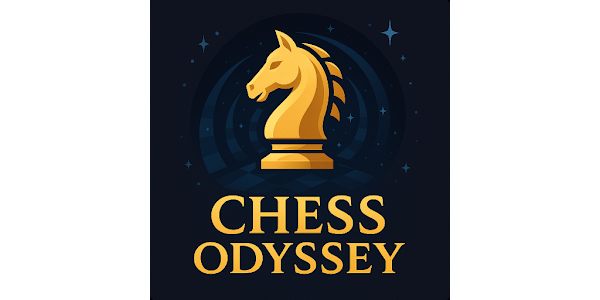In the intricate universe of chess, where 64 squares encapsulate boundless possibilities, the journey to mastery often feels like an eternal quest. Players, from ambitious amateurs to seasoned grandmasters, continuously seek the elusive edge, the secret formula that transforms mere moves into a symphony of strategic brilliance. This pursuit frequently distills into two critical domains: the sharp precision of opening preparation and the profound depths of strategic understanding.
The Opening Gambit: Navigating the Sicilian`s Labyrinth
For decades, the opening phase of a chess game has been a battleground of innovation and meticulous preparation. Among the myriad choices, certain lines stand out for their complexity, dynamism, and sheer strategic richness. The Najdorf Variation of the Sicilian Defense (1.e4 c5 2.Nf3 d6 3.d4 cxd4 4.Nxd4 Nf6 5.Nc3 a6) is undoubtedly one such titan.
Feared by many White players and championed by legends, the Najdorf is not merely a sequence of moves; it`s a philosophy. It embodies a blend of aggressive attacking chess with deep positional plans, offering Black a highly dynamic response to White`s initial thrust. Mastering such an opening demands more than rote memorization; it requires understanding the underlying ideas, the tactical themes, and the strategic nuances that define each variation.
A comprehensive repertoire in an opening like the Najdorf involves a multi-faceted approach:
- Core Lines: Delving into the main variations, understanding White`s most common and critical responses (e.g., 6.Bg5, 6.Be3, 6.Be2, 6.Bc4).
- Sidelines and Alternatives: Being prepared for less common but still potent moves White might try on move 6 (e.g., 6.h3, 6.g3, 6.Rg1), ensuring no stone is left unturned.
- Anti-Sicilians: Crucially, a complete Black repertoire against 1.e4 must address White`s attempts to steer clear of the main open Sicilian lines altogether. This includes navigating popular deviations like the Grand Prix Attack (2.Nc3), the Alapin Variation (2.c3), or positional alternatives after 2.Nf3 d6, such as 3.Bb5+. The prepared player remains unperturbed, regardless of White`s opening gambit.
The beauty of mastering an opening like the Najdorf lies in its empowering effect. It grants the player confidence, transforming potential trepidation into calculated assertiveness. When your opponent`s “surprise weapon” is merely another path you`ve already charted, the game truly begins after move 10, often with a clear positional advantage.
The Strategic Crucible: Forging Positional Fortitude
While a well-played opening can provide a significant advantage, the true artistry of chess unfolds in the middlegame. Here, tactical flashes are often mere consequences of deeper strategic currents. Without a profound understanding of chess strategy, even the best opening preparation can quickly dissipate into a disorganized mess. This is where the foundational principles of strategy come to the fore, turning raw tactical potential into cohesive, winning plans.
Mastering chess strategy involves a structured approach to evaluating positions and formulating long-term goals. It`s about asking not just “What`s the best move?” but “What`s the best *plan*?” Key concepts include:
- The Soul of Chess – Pawns: As Philidor famously stated, “Pawns are the soul of chess.” Understanding pawn structures – their strengths, weaknesses, and their role in defining a position – is paramount. Weak pawns invariably lead to weak squares, which become critical targets or staging posts for pieces.
- Piece Play and Coordination: Each piece has its unique strengths and weaknesses. Strategic mastery involves identifying underperforming pieces and activating them, understanding when to exchange pieces (and which ones), and ensuring harmonious coordination among your forces. A misplaced knight or a passive rook can undermine an otherwise strong position.
- King Safety: The safety of the king is non-negotiable. Strategic decisions, even aggressive ones, must always weigh the impact on king security. Often, piece activity directly contributes to or detracts from the king`s defensive shield.
- Exploiting Weaknesses: The ultimate strategic goal is to identify and exploit your opponent`s weaknesses. This could be a weak pawn, an exposed king, or poor piece coordination. The challenge lies not just in finding these weaknesses but in prioritizing targets and formulating a clear, effective plan that blends strategic pressure with tactical execution.
This strategic thinking isn`t about memorizing patterns; it`s about developing an internal compass that guides your decisions. It’s about cultivating the ability to analyze, evaluate, and make practical decisions under pressure, just as in a real game.
The Synergy of Skill: Weaving Openings and Strategy
The journey to chess mastery is not a linear progression from opening to middlegame to endgame, with each phase isolated from the others. Rather, it is a dynamic interplay, a seamless tapestry woven from opening theory, strategic principles, and tactical acumen. A powerful opening repertoire provides a launching pad, but it is strategic understanding that dictates where the rocket lands and what it accomplishes upon arrival.
Many players, in their zeal for quick results, gravitate towards memorizing sharp opening lines, only to find themselves adrift when the known theory runs out. Conversely, others immerse themselves in abstract strategic concepts, struggling to navigate the initial complexities of the opening. The truly effective player recognizes that these two domains are symbiotic.
A deep opening understanding helps you achieve a strategically sound position. Strong strategic insights then allow you to capitalize on the advantages gained from the opening, transform small edges into decisive ones, and adapt to the ever-evolving nature of the game. It’s a continuous feedback loop: better strategy informs opening choices, and a well-chosen opening creates fertile ground for strategic execution.
Ultimately, the pursuit of chess mastery is a testament to dedication and intellectual curiosity. It demands not just an encyclopedic knowledge of variations but also a profound grasp of the underlying logic that governs the game. By embracing both the precision of opening preparation and the wisdom of strategic principles, a player can truly unlock their full potential on the chessboard, transforming potential into palpable progress.









